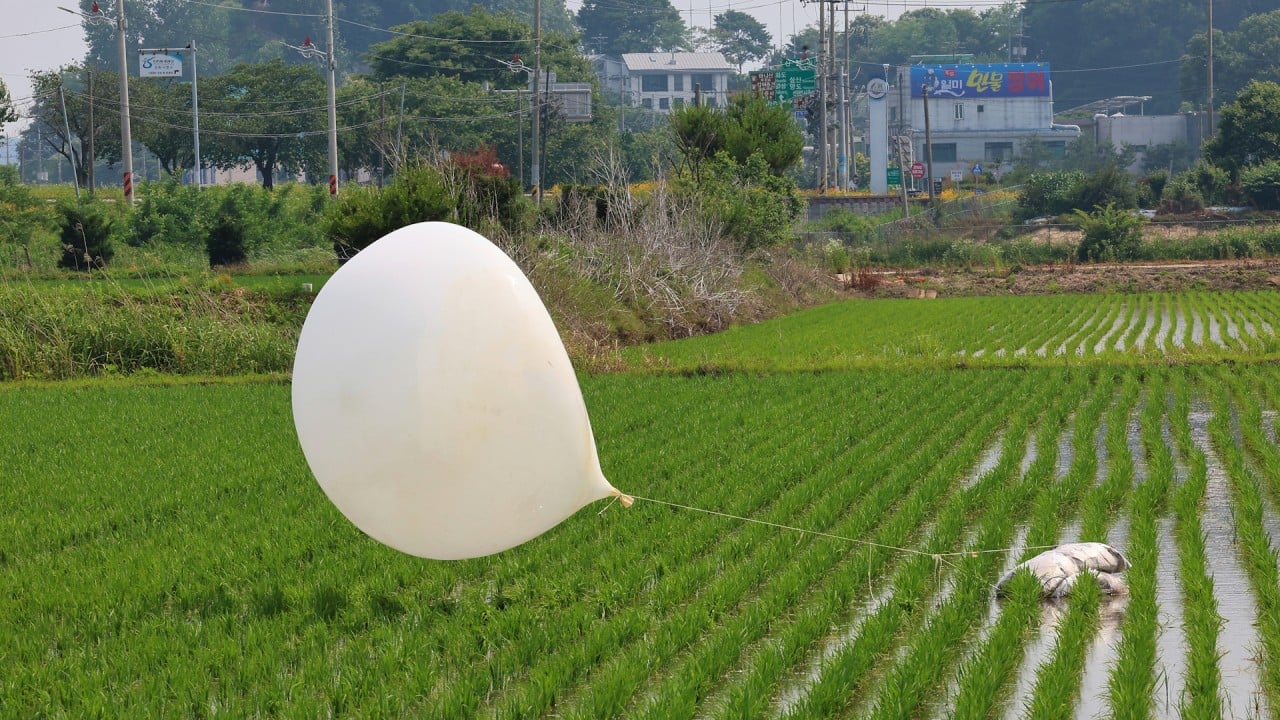South Korea’s reunification plan based on human rights risks deepening row with the North
In his speech on Liberation Day on August 15 marking the end of Japan’s 1910-1945 rule over Korea, Yoon emphasised the need to expose North Koreans to ideas of freedom by providing them with access to outside information.
“We must be more proactive in expanding the value of freedom to the North and inducing substantive changes. Above all, we will take a multifaceted approach to significantly improve human rights in North Korea,” Yoon said.
Yoon also proposed the creation of an inter-Korean working group to address a range of issues including tension reduction, economic cooperation and climate change.

Kim told the media despite Pyongyang’s efforts to suppress foreign influence, North Koreans have been secretly watching and sharing South Korean dramas. He also referred to a law passed by the North last year prohibiting using South Korean-style language.
In 2020, Pyongyang passed a law banning foreign cultures and ideas, imposing harsh punishments on those caught consuming or distributing them.
However, analysts say Yoon’s doctrine represented a shift from the South’s traditional reunification strategy, which has been based on mutual respect and exchanges.
“Yoon’s reunification formula marks a departure from the existing approach as it seeks changes in the North despite the lack of reconciliation,” Hong Min, a senior researcher at the Korea Institute for National Unification, told This Week in Asia.
“Regardless of the South’s intentions, the North is likely to perceive this as a hostile move, viewing it as an attempt by the South to instigate regime change by exposing North Koreans to outside information.”
In 1989, Seoul mooted the “Korean National Community Reunification Formula”, calling for a two-stage reunification process. Under this policy, the first stage entailed a confederation by building inter-Korean economic and social communities followed by a final stage of a unified Korea under one government.
Despite his initial scepticism, the late North Korean leader Kim Jong-il found some similarities between Seoul’s proposal and Pyongyang’s concept of reunification through a Koryo (Korea) confederation.
This understanding led to a historic inter-Korean summit between him and the late South Korean President Kim Dae-jung in 2000, ushering in a reconciliation phase and bilateral exchanges.
However, the detente did not survive the conservative shift in South Korea’s politics in 2008.

Koh Yu-hwan, an emeritus political science professor from Dongguk University, said Seoul’s new unification policy was openly aiming to create divisions between North Koreans and their regime through campaigns promoting freedom and human rights. “This contradicts the South’s offer for dialogue,” he added.
The policy is likely aimed at rallying conservative support behind Yoon, who has faced low approval ratings and mounting calls for investigations into several scandals including one involving his wife Kim Keon-hee, according to Koh.
Lim Eul-chul, a senior analyst at Kyungnam University’s Institute for Far Eastern Studies, said South Korean authorities likely thought that Pyongyang could be losing its grip on the population, making it an opportune moment to push for reunification through absorption.
“But it’s another matter whether the South can achieve this,” he cautioned.

Earlier this year, Kim Jong-un declared that inter-Korean ties had become permanently fixed as relations between two hostile states, effectively repudiating the reunification goal governing inter-Korean ties since 1991.
In recent months, tensions have flared with the North launching trash-filled balloons across the border in retaliation for anti-Pyongyang leaflets sent by South Korean activists, many of whom were former defectors.
In response, South Korea resumed propaganda broadcasts through loudspeakers along the border.
